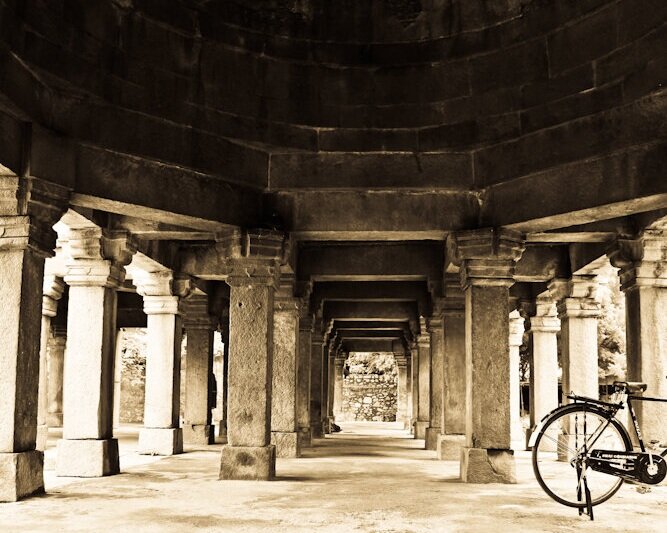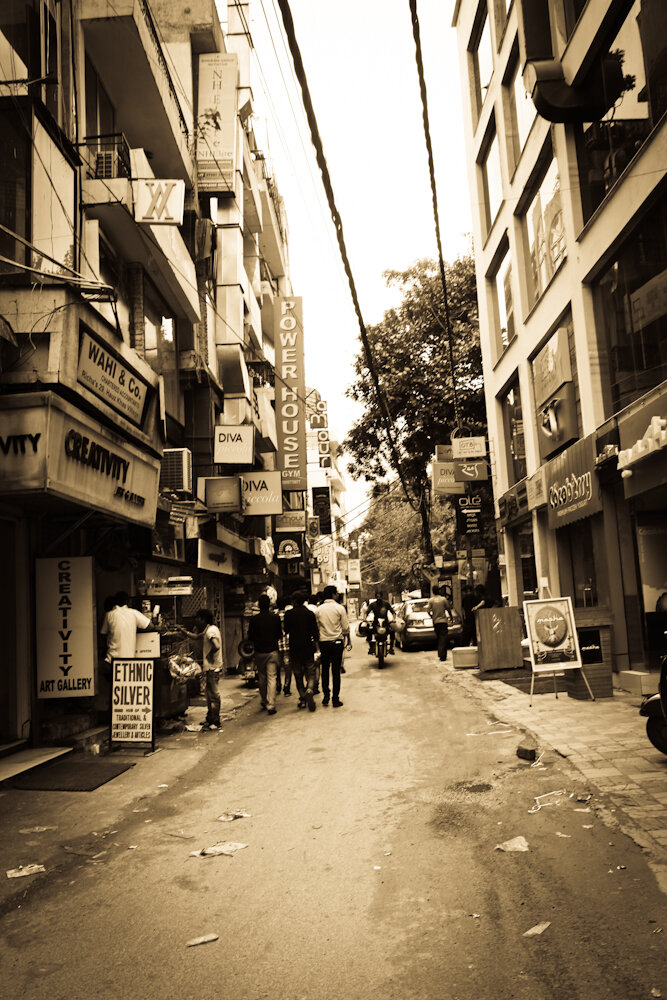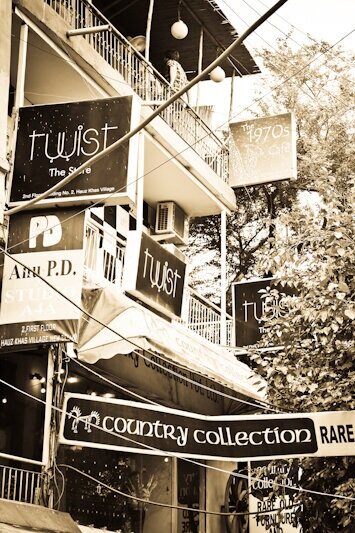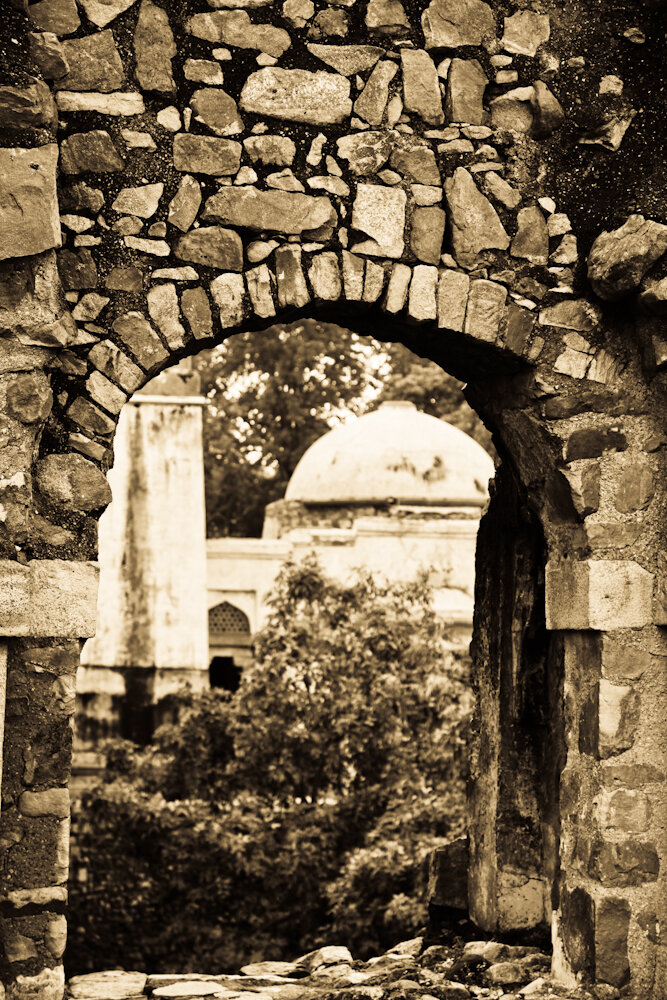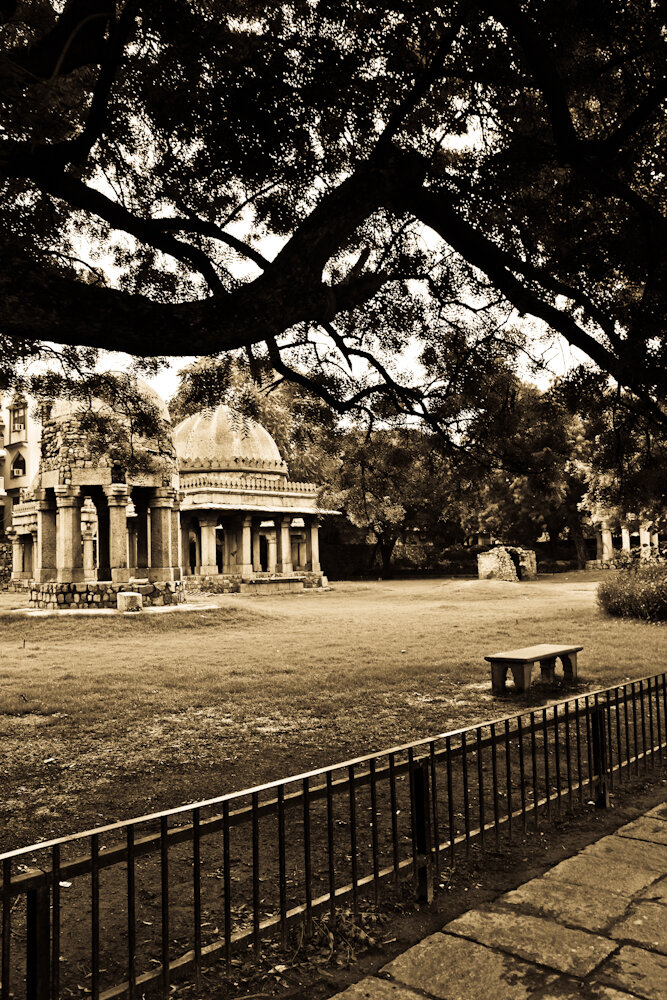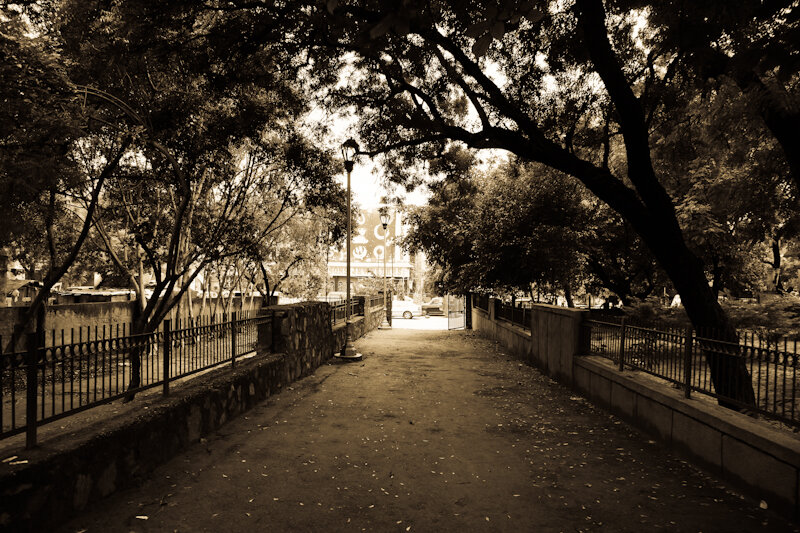HANGING AT HAUZ KHAS
Modern cities are points of intersection between the past and the present. However when the city is as antique as Delhi, the past, steeped in histories & stories, runs, overwhelms, sticks and is celebrated while the present, often viewed from the shadows, is seen as something that disturbs, under-awes and disrupts the original narrative.
Then there is Hauz Khas Village.
You walk into the village curious to know why it is one of the go-to places mentioned in Delhi’s “best”, “top 10” and the rest. Well, the rainbow to this pot of gold is a more than seven colours crowded. Once you have negotiated with the cars, watched some strewn monuments roll by and blinded by the surf-white facade of the Jagannath temple (yes, temples can be spotlessly clean!) you reach the no-car zone pocket tucked right in the end.
THE WOW
Once you cross the barrier, it opens out in gentrified glory with the cafe’s, edgy restaurants and bars, art galleries, studios, graffiti walls and kitschy boutiques. The back lanes with little sunlight, lot of scope for a chinwag across buildings and a criss cross of electric cables remind you of Old Delhi and then pluck you back into the more on-trend, arty surroundings belonging to a different sociology. One created by Bina Ramani in the late 80s when she ‘discovered’ it and drove the elite in. The artists, musicians and their ilk looking for alternate spaces followed after, plugging their ethos into it.
THE HOW
Amidst all the trappings, history gently taps you on the shoulder. The “Hauz Khas” or the water reservoir was constructed by Alauddin Khilji to serve the need of the growing population of his city - Siri. After the collapse of Khilji dynasty, a group of Jats set up a village in the area. When the tank silted, they began growing crops over it. It was Firoz Shah Tughluq’s ascension to the throne, followed by shortage of water in his capital, Firozabad that saw the tank being dredged and repaired, with additions - a mosque, a madrasa and gardens hemming the water tank. Once it was complete, Firoz Shah got so attached to it that built his tomb in the midst of the madrasa or collegiate mosque.
After Firoz Shah’s death, the royal patronage of the madrasa discontinued, the precinct was abandoned and the tank silted once more. Villagers moved into the madrasa and stayed until in the 20th century ASI stepped in. The villagers were moved, with adequate compensation, adjacent to their ‘old’ home. The complex was excavated, catalogued and preserved. During partition, government bought the surrounding land to provide home for the refugees and HKV gained a backwater character. And when the master plan of Delhi was crafted in 1962, it got plugged as an “urban village” - a nondescript one at that.
That definitely has changed.
THE NOW
It is young and abuzz, spilling out into the famous Deer Park where more daters than deer can be spotted. Walk a bit and you come face to face with little architectural gems like Munda Gumbad, Tohfewala Gumbad and Kali Gumti from the Tughluq Period and the Bagh e alam ka Gumbad and Wall mosque from the Lodi period. They don’t have grand stories to tell but it sure feels like monuments from different dynasties with different architectural sensibilities took a walk in the park one day and decided to stay.
The history lovers might not like the bypass of monuments, the youngsters might not engage with the historical backdrop except for cool Instagram-worthy images or dating, the cool urbane might have moved out to other places, the rents might be disproportionate, the traffic terrible but HKV stands at point where you meet two simultaneous expressions.
There is a conversation between the past and present. That, truly is, the hold of Hauz Khas.
ABOUT THE WALK:
The walk Hanging at Hauz Khas was designed as a walk down the ancient and modern. The idea was to engage with both and take in all the trappings of this “must see” pocket of Delhi. Many walks later we understood the hold of Hauz Khas and its place in the city. The article above intends to share that rather than the route with all its stops.
BOOKS REFERENCED:
Delhi: 14 Historic Walks, Swapna Liddle
INTACH, Delhi Chapter
The Age of Wrath, Abraham Eraly
Dynamics & Growth Dichotomy of Urban Villages, Case Study
Articles: TOI, The Hindu, The Guardian

